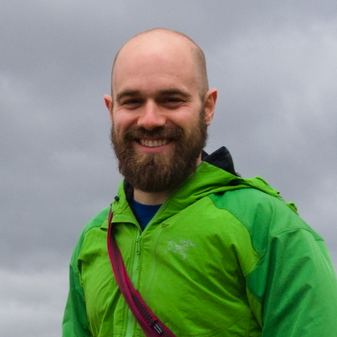In late October 2020 Mack and I were supposed to start a 3 day bike-packing trip into the Portola Redwoods but this turned into a 2 day adventure in the Pinnacles National Park! A last minute Red-Flag warning and 40-50MPH wind gusts in Portola made our expected stay under the Redwoods a bit unnerving! We instead decided to head to the Pinnacles hiking, climbing, and I even brought my new Elecraft KX2 amateur radio to attempt a SOTA activation of W6/SC-213 Hawkins Peak.
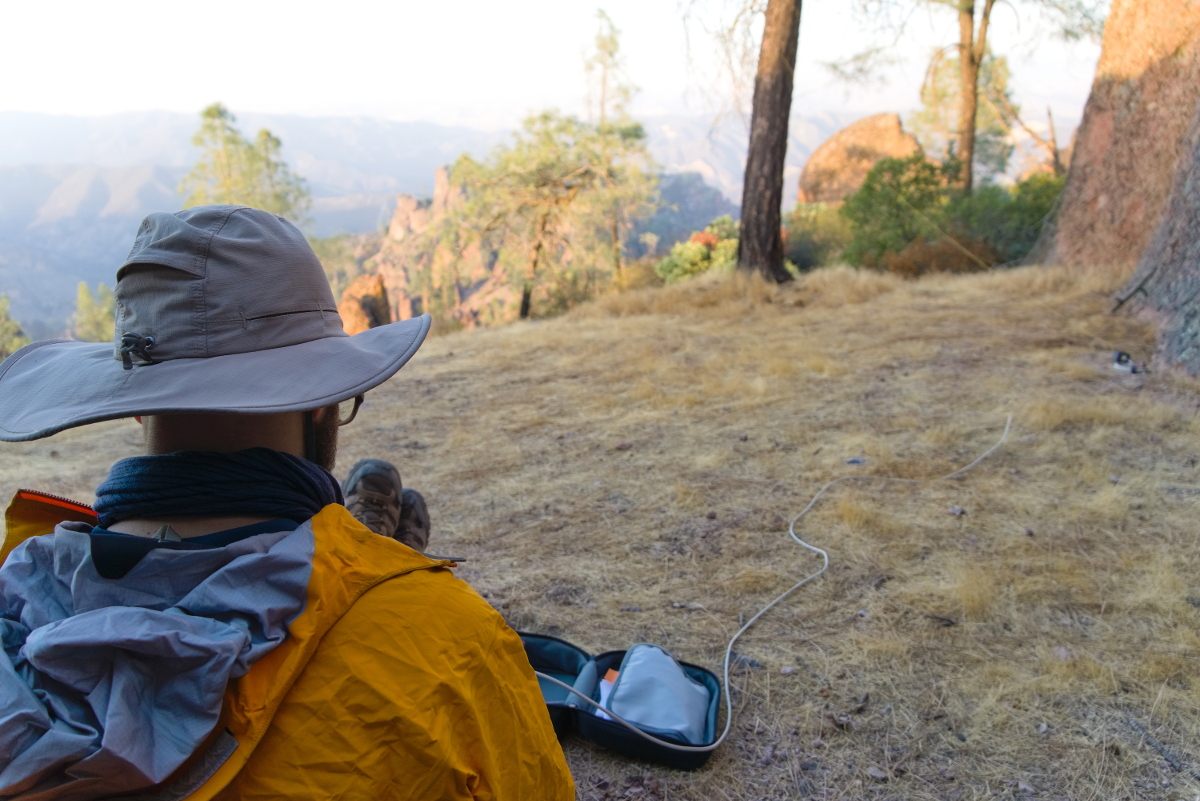
Activating Hawkins Peak W6/SC-213
Mack and I set off along the familiar path of the Condor Gulch trail, one we’ve been down several times to hike to climbing spots such as The Sisters or Teaching Rock in prior trips. This time we stuck right climb up the Condor Gulch Trail leading to Hawkins peak (via the High Peaks Trail). We had left from the Bay Area later in the day and the sun was bearing down at the start of our hike but it slowly let up over the miles we gained, a gentle breeze even welcomed us to the summit! The summit trail is actually a small “climbers trail” along the High Peaks Trail that brings you through a small jumble of boulders and bushes before you find yourself in the unique Hawkins Peak meadow. There is no technical climbing or exposure required to get to this spot, at most a small section of class 3 scramble up a rock incline is the most you’ll encounter on this small trail.
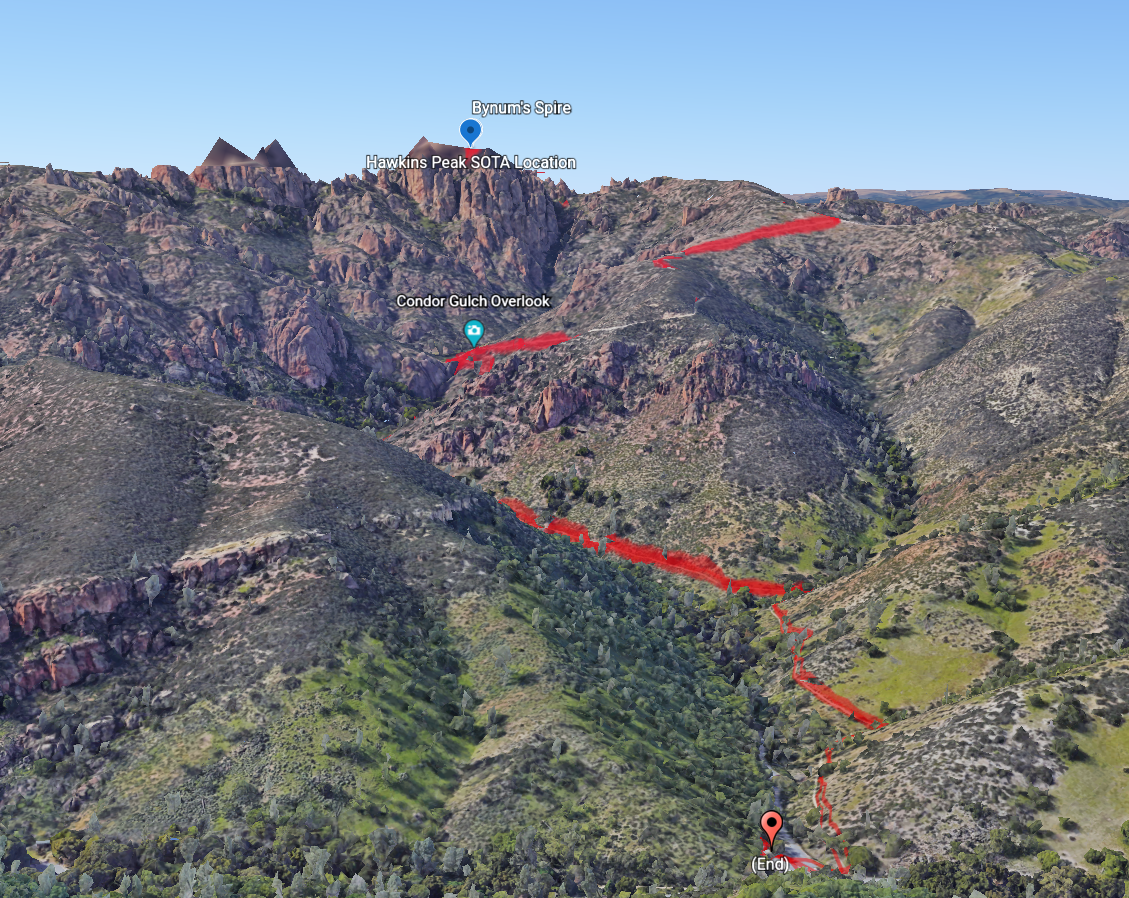
When we arrived at the meadow we immediately knew this was going to be a great spot for a late lunch with many spires providing shade (except for those arriving at noon). Checking my SOTA iPhone app confirmed we were in the activation zone! Do note that this is also an active area for climbers along the small spires and large cliffs. You’ll likely be alone but if people are climbing stay clear of setting up beneath them on any side of a spire they are climbing. The is AMPLE room in the activation zone for spots and antennas. Pinnacles is known for less than stellar rock quality and even previously solid rocks within the formations can come loose and fall, especially when being climbed. The approximate spot we operated from is 36.48830139,-121.19743446.
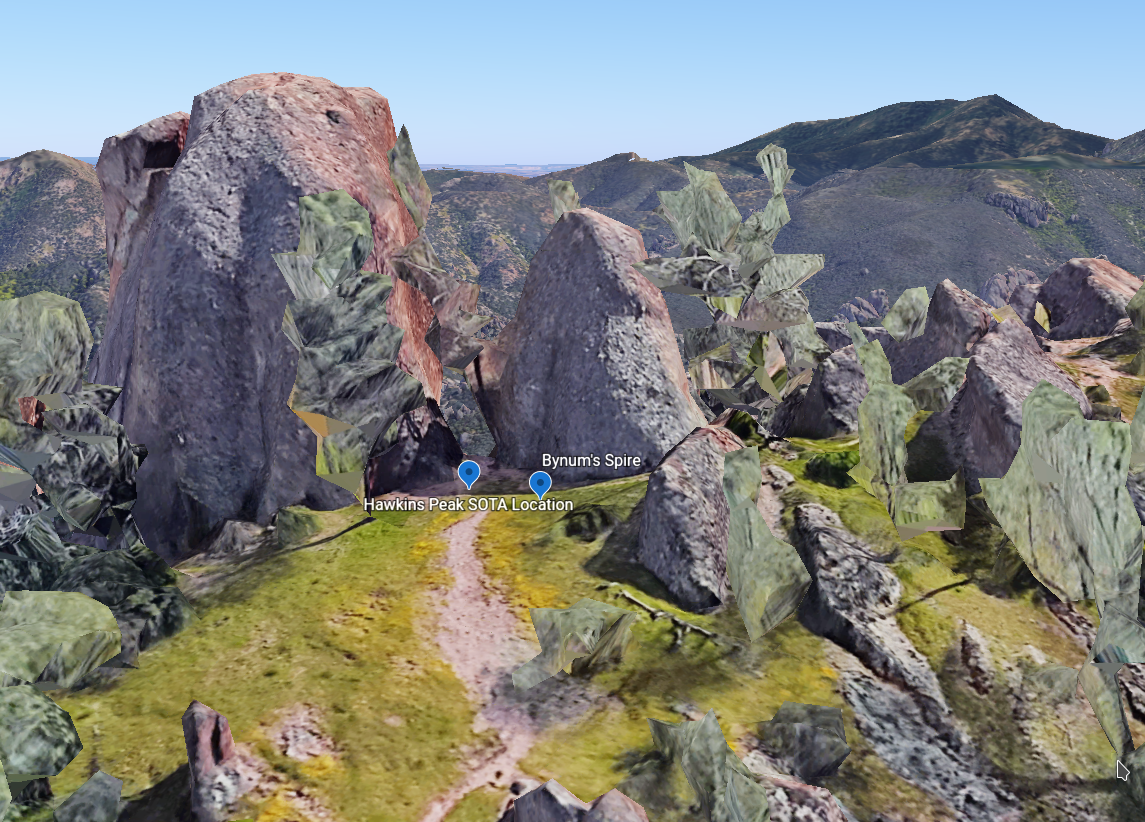
I brought along my new Elecraft KX2 and a home built end-fed “random” 85 foot wire with a sufficient counterpoise fed by a home built 9:1 unun (unbalanced-to-unbalanced auto-transformer). I created a small common mode choke using the coax at the unun and mix 43 ferrite I had on hand to avoid any RF on the coax shield. Occasionally I’ve found the CW keys of the KX2 get a bit “hot” with RF in the right conditions without it. We didn’t have a mast with us and instead relied on the rocks and trees to lay the wires a few feet off the ground. This was the first time using both this radio and this antenna. In SOTA setups you try to avoid the ground losses you can but it’s a diminishing returns battle and your fighting sunlight and cold winds at the same time! We’re already on a mountain peak, let’s call it good.
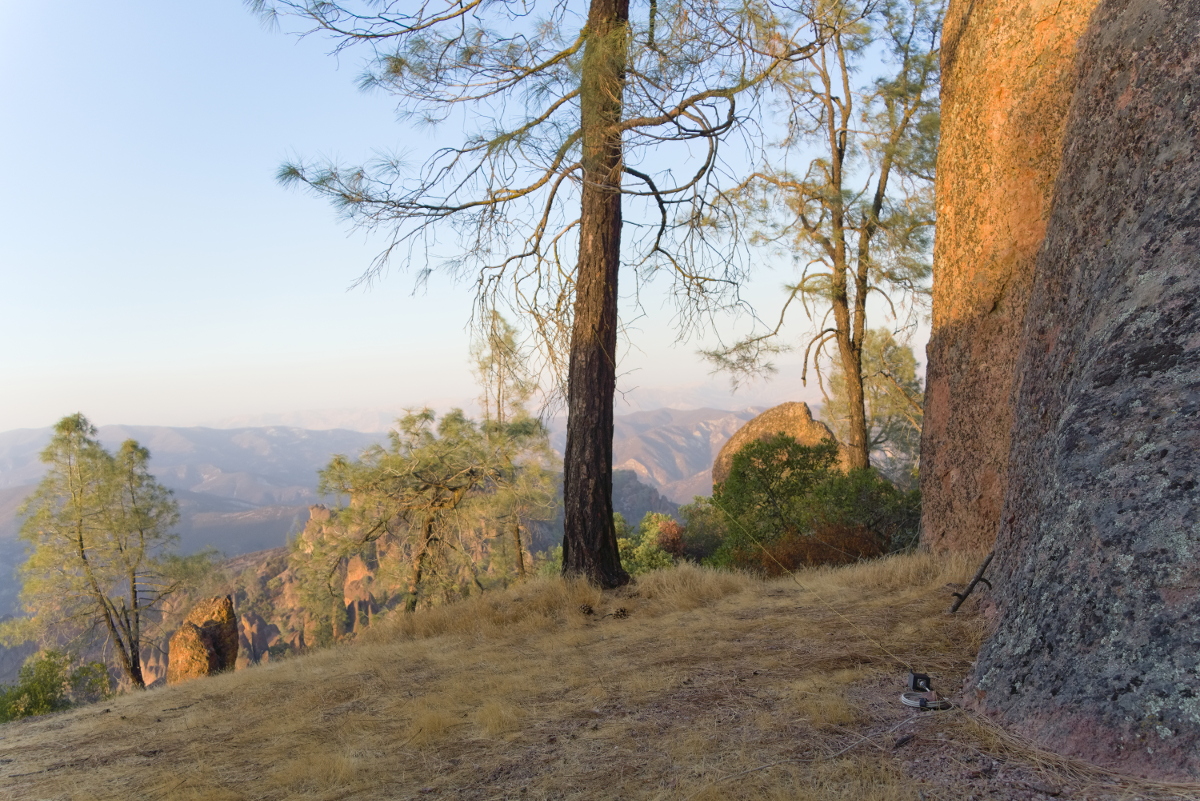
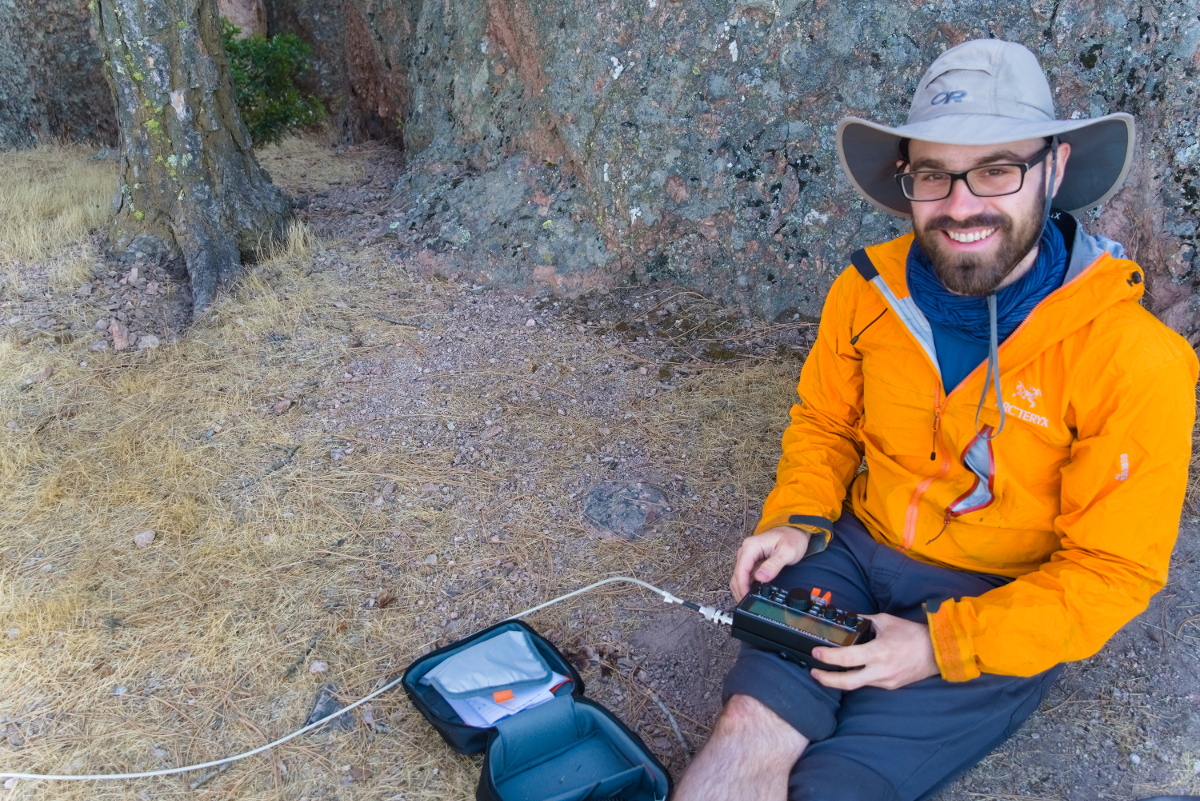
We fired up 20 meters first (14 MHz amateur band) and attempted to respond to CW (Morse Code) and SSB (Single Side Band - Voice) stations and call CQ ourselves. The band was not working and we didn’t have a prior SOTA reflector spot enabled so our only option was calling CQ SOTA. I brought up 85 feet of 22AWG wire so I could work the lower bands and that is exactly what we did! It was nearing 5PM PDT so the lower bands were going to be a good bet. I auto-tuned to 40 meters (7MHz amateur band) and noticed the much better activity (it still amazes me how much LESS RF noise rural areas have compared to the the San Francisco Bay area)! Holding my phone (Verizon) in the right spot gave us a burst of reception and we took this opportunity to (SOTA) spot ourselves on 40 meters SSB. Almost immediately the stations came in, Hawkins peak last saw an activation nearly 3 years prior in 2017! California, Oregon, Washington… our 10W of power was reaching out with an average SSB RST (Readability, Signal, Tone) report of 45 to 55 along the west coast and out to Texas. After working a number of stations I moved to the CW band and reached out to the East Coast (Kentucky)!
After 13 contacts it was getting cold and dark and we had a few miles of downhill hiking ahead of us, food, and camp, so we called it a night.
Climbing The Flatiron
The next morning we set off again, this time our radios replaced by harnesses, rope, carabiners, and other assorted rock climbing equipment (we did bring my Yeasu VX-8R but had no luck on 146.52 MHz calling out during the day). This gear was much heavier than my KX2, unfortunately. We set off to find the Flatiron rock climbing area to try some easier 5.0 and 5.3 sport climbs. “Sport” is a relative term in Pinnacles where bolts can be spaced out 10-20 feet apart on the suspect Pinnacles rock quality. It’s prudent to keep an eye out for rocks, horns, or other natural features to sling as added protection. Neither Mack or I had climbed, at all, in many months (this is the Covid-19 era…) so we were taking it easy. The first route, unprotected 5.0 climbing to the first bolt around a rock out-cropping was too much for my risk assessment and I down-climbed.
I jumped over to the 5.3 route nearby and climbed up to a ledge where the 3rd bolt of the route was. This looked much easier and less sketchy from the ground! Reaching the next bolt required traversing 10 feet across the ledge and climbing up and over another 5 feet. Falling here would be bad, hitting the ledge(s) and scrapping a very long way down. The lonely little shrub pointed out by the guide book on this ledge was about the size of my thumb, less that stellar for trusting with my health and safety. This is the first time I have ever bailed from a route and left gear behind. Scouting for additional natural protection but coming up empty handed I decided to play it safe and come down. I cut off a few feet of webbing, grabbed a rappel ring from my harness, and fashioned a water knot to the 3rd bolt and got lowered. It happens, it was a good lesson considering I’ve climbing harder routes in the Pinnacles with just as long run-out bolts.
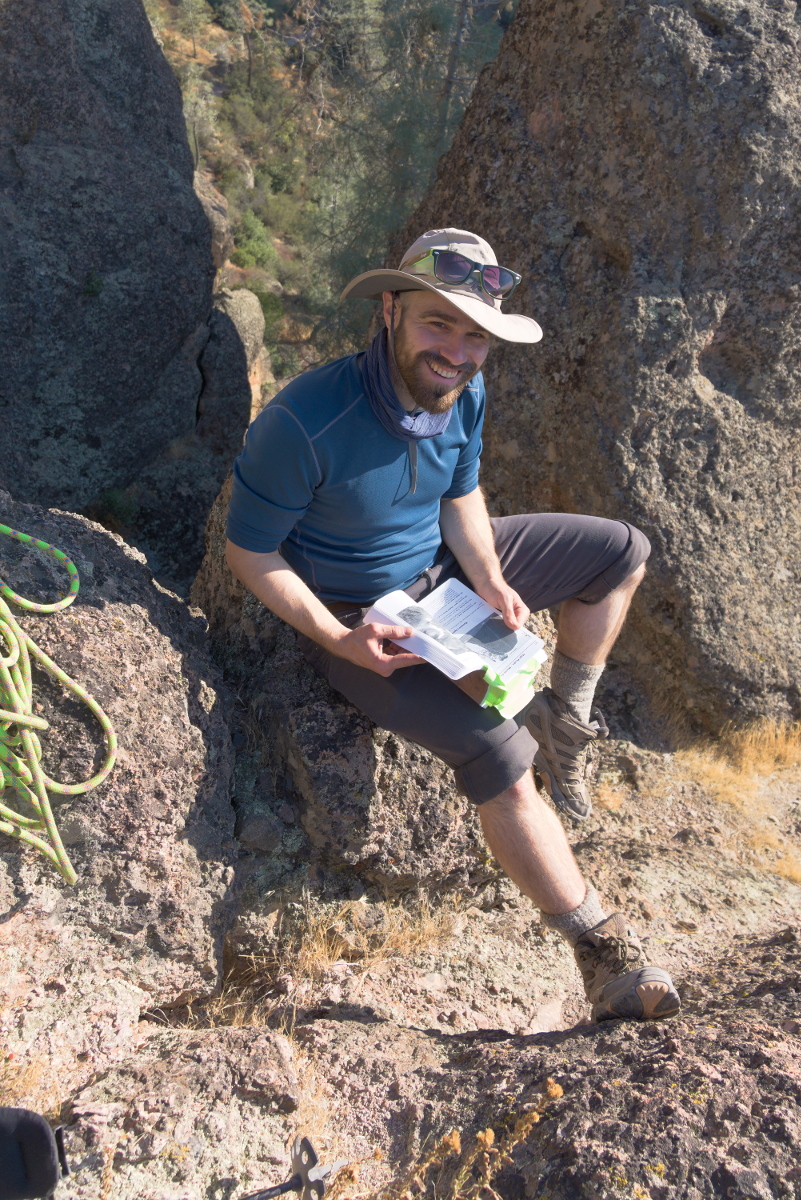
Climbing Bynum’s Spire (Hawkins Peak!)
Having bailed from the Flatiron we settled for a nice long hike along the high peaks trail. This trail has multiple narrow and steep sections, I imagine some people do get hurt here just hiking each year. We decided to checkout out the Hawkins Peak area for smaller climbs, we’d just been here the day prior activating the same spot for SOTA! Bynum’s Spire is the rock I leaned back on operating my amateur radio, I thought this was pretty cool :)
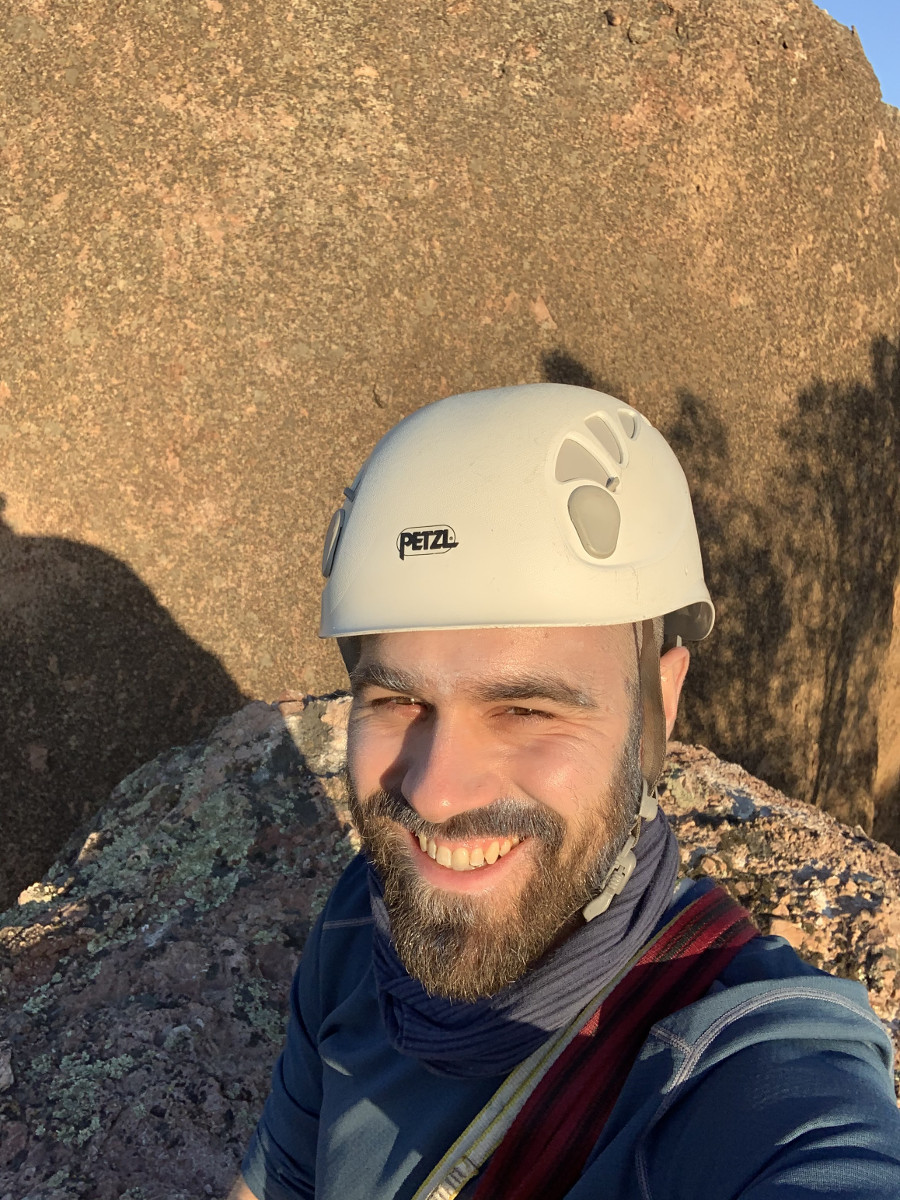
This route is only a 5.2 but the first, and only, bolt is about 20 feet high, it’s a bit sporty (and mossy). I did some investigation with my camera’s zoom lens and hopping on nearby boulders to verify the route actually has an anchor at the top. The guide book doesn’t show one and the “Pinnacles Rappel” (simul-rapelling off two sides of a pinnacle) is a real thing I don’t really want to do. I set up a quick top-rope while the Condors flew around the nearby spires (there were no active Condor closures that I could find for the area, always check!).
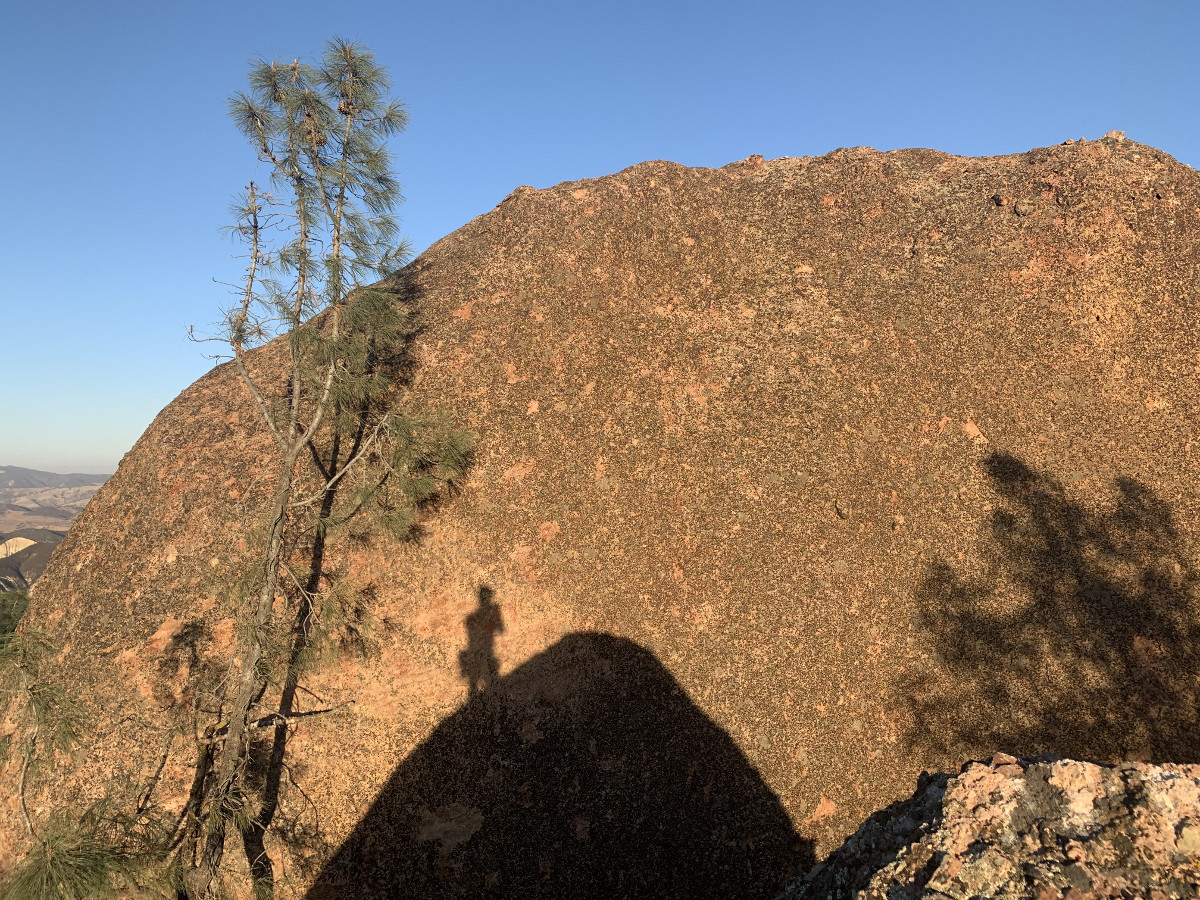

We got a lap or two on the rock and the sun was setting. It was time to get our headlamps out, grab a snack, and head back home.
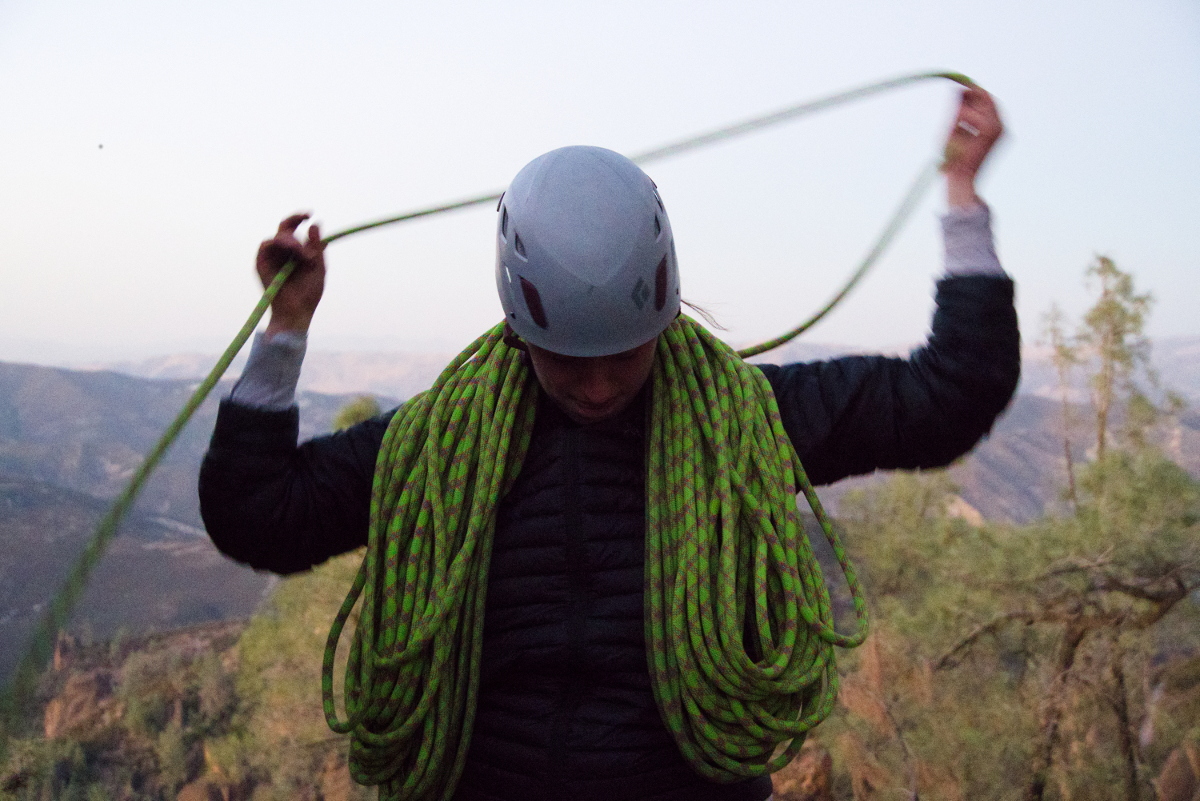
We continued back down the Condor Gulch trail we’d taken the day prior. It was complete darkness when we ran into another group going much slower than us when we realized this was actually the San Benito Search and Rescue team carrying out an injured person. We gave them a good 100 or so feet distance, there was no point to passing and making them worry about us. We eventually passed when they let us go by taking a break at a switchback but we cut the trail a bit to give them distance. I didn’t see climbing gear but we’re not sure what happened, we were near the high peaks trail with many dangerous hiking cliff staircases… It didn’t appear life threatening thankfully and I hope they are safe and recovering! Experiences like this, especially having bailed from a route hours earlier for my own safety is a good reminder of how fragile and quick to unravel outdoor adventures can become.
Having turned our 3 day vacation into 2 days in the Pinnacles getting some great hiking, climbing, and even a SOTA amateur radio activation in we were happy, albeit a bit tired. There are several other SOTA peaks in the Pinnacles and I’m sure we’ll return to activate the others among our climbing and hiking adventures here. Pinnacles holds a bit of a hesitant love in my heart - hot, run-out climbs, but always adventures.
SOTA Lessons Learned
Here are a few lessons learned activating the SOTA summit.
- A mast would allow for quicker and better antenna setups
- A bit more height to reduce transmit ground losses (but height isn’t too critical if you’re on a summit)
- Not reliant on height/distant to trees or boulders
Climbing Lessons Learned
Here are a few lessons learned from climbing during this trip.
- COVID-19 has stopped our climbing gym training and this greatly affects:
- Physical ability - Especially the climbing specific toe/fingers
- Mental ability - Everything is a bit scarier
- Bailing is OK - This is a dangerous activity and trust your gut.
